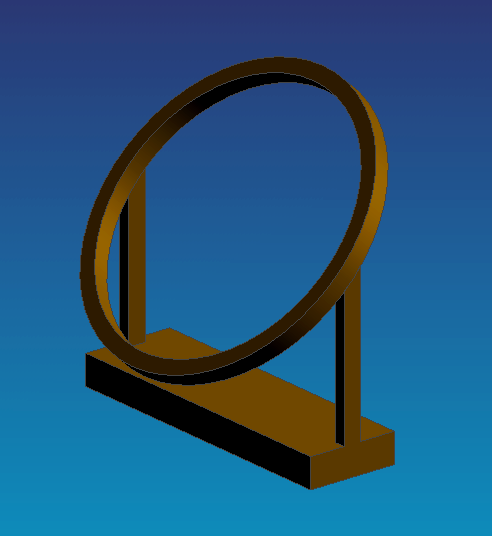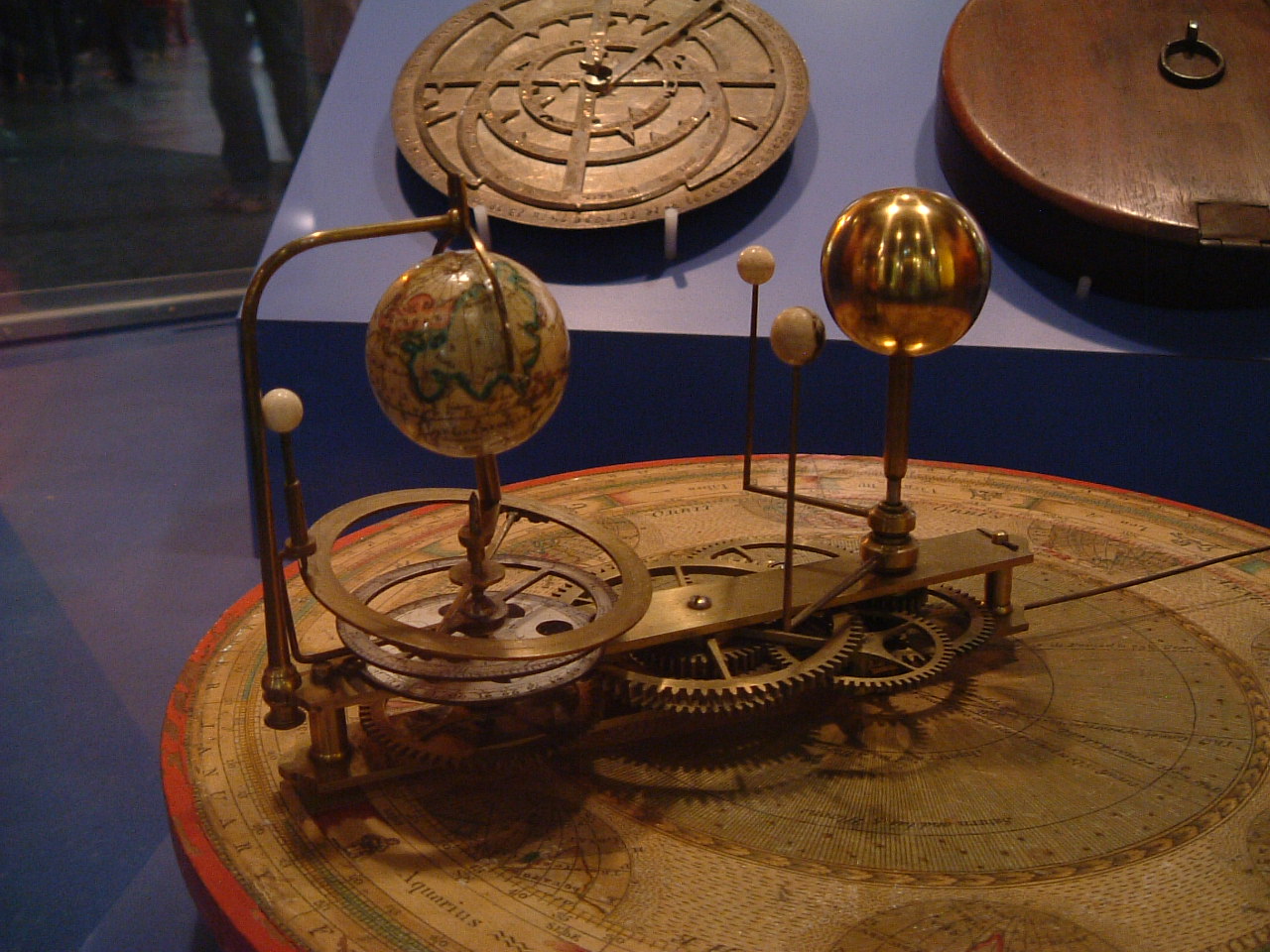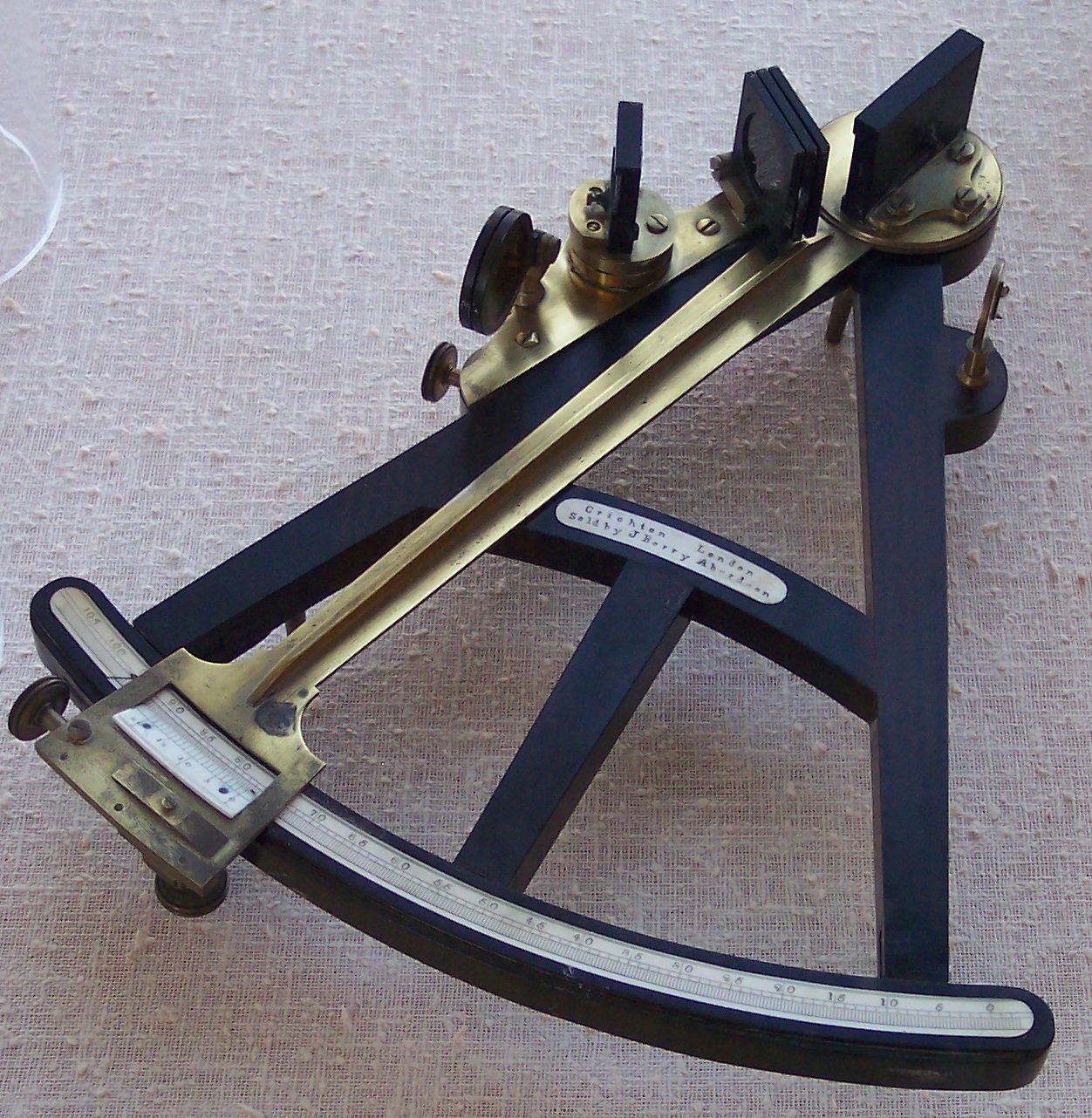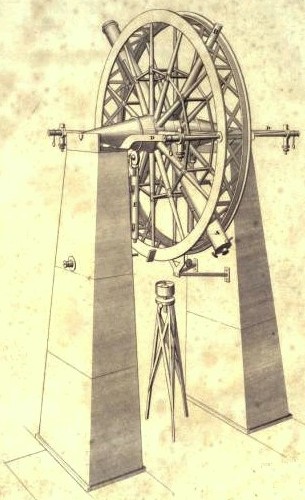|
Astronomical Instruments
Astronomical instruments include: *Alidade *Armillary sphere * Astrarium *Astrolabe *Astronomical clock *the Antikythera mechanism, an astronomical clock *Blink comparator *Bolometer *the Canterbury Astrolabe Quadrant *Celatone *Celestial sphere *Charge-coupled device * Computers *CMOS sensor *Coronagraph * Cosmolabe *Dioptra * Equatorial ring * Equatorium *Gnomon *Inclinometer *Interferometer * Kamal *Meridian circle * Microchannel plate detector * Mural instrument * Nebra sky disk *Nocturnal * Octant *Optical spectrometer, a.k.a., Spectrograph *Orrery *Photographic plate *Photometer *Planisphere *the Prague astronomical clock * Quadrant *Reticle * Radio plate *Retroreflector * Scaphe *Sextant *Starshade *Space telescope *Spectrometers *Sundial *Telescope * Torquetum * Triquetrum *Zenith telescope See also *Astronomy * Outline of astronomy * Surveying instrument *Measurement instrument {{DEFAULTSORT:Astronomical instruments Instruments Instrument may refer to: Science a ... [...More Info...] [...Related Items...] OR: [Wikipedia] [Google] [Baidu] |
Alidade
An alidade () (archaic forms include alhidade, alhidad, alidad) or a turning board is a device that allows one to sight a distant object and use the line of sight to perform a task. This task can be, for example, to triangulate a scale map on site using a plane table drawing of intersecting lines in the direction of the object from two or more points or to measure the angle and horizontal distance to the object from some reference point's polar measurement. Angles measured can be horizontal, vertical or in any chosen plane. The alidade sighting ruler was originally a part of many types of scientific and astronomical instrument. At one time, some alidades, particularly using circular graduations as on astrolabes, were also called ''diopters''. With modern technology, the name is applied to complete instruments such as the ' plane table alidade'. Origins The word in Arabic ( , "the ruler"), signifies the same device. In Greek and Latin, it is respectively called , "''dioptra ... [...More Info...] [...Related Items...] OR: [Wikipedia] [Google] [Baidu] |
Equatorial Ring
An equatorial ring was an astronomical instrument used in the Hellenistic world to determine the exact moment of the spring and autumn equinoxes. Equatorial rings were placed before the temples in Alexandria, in Rhodes, and perhaps in other places, for calendar purposes. The easiest way to understand the use of an equatorial ring is to imagine a ring placed vertically in the east-west plane at the Earth's equator. At the time of the equinoxes, the Sun will rise precisely in the east, move across the zenith, and set precisely in the west. Throughout the day, the bottom half of the ring will be in the shadow cast by the top half of the ring. On other days of the year, the Sun passes to the north or south of the ring, and will illuminate the bottom half. For latitudes away from the equator, the ring merely needs to be placed at the correct angle in the equatorial plane. At the Earth's poles, the ring would be horizontal. The equatorial ring was about one to two cubits (45cm–90cm ... [...More Info...] [...Related Items...] OR: [Wikipedia] [Google] [Baidu] |
Orrery
An orrery is a mechanical model of the Solar System that illustrates or predicts the relative positions and motions of the planets and moons, usually according to the heliocentric model. It may also represent the relative sizes of these bodies; however, since accurate scaling is often not practical due to the actual large ratio differences, a subdued approximation may be used instead. Though the Greeks had working planetaria, the first orrery that was a planetarium of the modern era was produced in 1704, and one was presented to Charles Boyle, 4th Earl of Orrery – hence the name. They are typically driven by a clockwork mechanism with a globe representing the Sun at the centre, and with a planet at the end of each of the arms. History Ancient versions The Antikythera mechanism, discovered in 1901 in a wreck off the Greek island of Antikythera in the Mediterranean Sea, (it now resides in the National Archaeological Museum of Athens) and extensively studied, exhibited the ... [...More Info...] [...Related Items...] OR: [Wikipedia] [Google] [Baidu] |
Optical Spectrometer
An optical spectrometer (spectrophotometer, spectrograph or spectroscope) is an instrument used to measure properties of light over a specific portion of the electromagnetic spectrum, typically used in spectroscopic analysis to identify materials. The variable measured is most often the light's intensity but could also, for instance, be the polarization state. The independent variable is usually the wavelength of the light or a unit directly proportional to the photon energy, such as reciprocal centimeters or electron volts, which has a reciprocal relationship to wavelength. A spectrometer is used in spectroscopy for producing spectral lines and measuring their wavelengths and intensities. Spectrometers may operate over a wide range of non-optical wavelengths, from gamma rays and X-rays into the far infrared. If the instrument is designed to measure the spectrum on an absolute scale rather than a relative one, then it is typically called a spectrophotometer. The majority o ... [...More Info...] [...Related Items...] OR: [Wikipedia] [Google] [Baidu] |
Octant (instrument)
The octant, also called a reflecting quadrant, is a reflecting instrument used in navigation. Etymology The name ''octant'' derives from the Latin ''octans'' meaning ''eighth part of a circle'', because the instrument's arc is one eighth of a circle. ''Reflecting quadrant'' derives from the instrument using mirrors to reflect the path of light to the observer and, in doing so, doubles the angle measured. This allows the instrument to use a one-eighth of a turn to measure a quarter-turn or quadrant. Origin of the octant Newton's reflecting quadrant Isaac Newton's reflecting quadrant was invented around 1699. A detailed description of the instrument was given to Edmond Halley, but the description was not published until after Halley's death in 1742. It is not known why Halley did not publish the information during his life, as this prevented Newton from getting the credit for the invention that is generally given to John Hadley and Thomas Godfrey. One copy of this ins ... [...More Info...] [...Related Items...] OR: [Wikipedia] [Google] [Baidu] |
Nocturnal (instrument)
A nocturnal is an instrument used to determine the local time based on the relative positions of two or more stars in the night sky. Sometimes called a ''horologium nocturnum'' (time instrument for night) or ''nocturlabe'' (in French and occasionally used by English writers), it is related to the astrolabe and sundial. Knowing the time is important in piloting for calculating tides and some nocturnals incorporate tide charts for important ports. Even if the nightly course of the stars has been known since antiquity, mentions of a dedicated instrument for its measurement are not found before the Middle Ages. The earliest image presenting the use of a nocturnal is in a manuscript dated from the 12th century.Farre i Olive E., (1996): ''La Sphaera Horarum Noctis de Ramon Llull'', "La Busca de Paper" n. 22, Primavera, p. 3-12 (edicion bilingue) Raymond Lull repeatedly described the use of a ''sphaera horarum noctis'' or ''astrolabium nocturnum''.Raimon Lull, ''Liber Principorum medicin ... [...More Info...] [...Related Items...] OR: [Wikipedia] [Google] [Baidu] |
Nebra Sky Disk
The Nebra sky disc (german: Himmelsscheibe von Nebra) is a bronze disc of around diameter and a weight of , having a blue-green patina and inlaid with gold symbols. These symbols are interpreted generally as the Sun or full moon, a lunar crescent, and stars (including a cluster of seven stars interpreted as the Pleiades). Two golden arcs along the sides, interpreted to mark the angle between the solstices, were added later. A final addition was another arc at the bottom with internal parallel lines, which is usually interpreted as a solar boat with numerous oars, though some authors have also suggested that it may represent a rainbow, or the Aurora Borealis. The disc was found buried on the Mittelberg hill near Nebra in Germany. It is dated by archaeologists to and attributed to the Early Bronze Age Unetice culture. Various scientific analyses of the disc, the items found with the disc, and the find spot have confirmed the Early Bronze Age dating. The Nebra sky disc featur ... [...More Info...] [...Related Items...] OR: [Wikipedia] [Google] [Baidu] |
Mural Instrument
A mural instrument is an angle measuring instrument mounted on or built into a wall. For astronomical purposes, these walls were oriented so they lie precisely on the meridian. A mural instrument that measured angles from 0 to 90 degrees was called a mural quadrant. They were utilized as astronomical devices in ancient Egypt and ancient Greece. Edmond Halley, due to the lack of an assistant and only one vertical wire in his transit, confined himself to the use of a mural quadrant built by George Graham after its erection in 1725 at the Royal Observatory, Greenwich. Bradley's first observation with that quadrant was made on 15 June 1742. The mural quadrant has been called the "quintessential instrument" of 18th century (i.e. 1700s) observatories. It rose to prominence in the field of positional astronomy at this time. Construction Many older mural quadrants have been constructed by marking directly on the wall surfaces. More recent instruments were made with a frame that was co ... [...More Info...] [...Related Items...] OR: [Wikipedia] [Google] [Baidu] |
Meridian Circle
The meridian circle is an instrument for timing of the passage of stars across the local meridian, an event known as a culmination, while at the same time measuring their angular distance from the nadir. These are special purpose telescopes mounted so as to allow pointing only in the meridian, the great circle through the north point of the horizon, the north celestial pole, the zenith, the south point of the horizon, the south celestial pole, and the nadir. Meridian telescopes rely on the rotation of the sky to bring objects into their field of view and are mounted on a fixed, horizontal, east–west axis. The similar transit instrument, transit circle, or transit telescope is likewise mounted on a horizontal axis, but the axis need not be fixed in the east–west direction. For instance, a surveyor's theodolite can function as a transit instrument if its telescope is capable of a full revolution about the horizontal axis. Meridian circles are often called by these names, althou ... [...More Info...] [...Related Items...] OR: [Wikipedia] [Google] [Baidu] |
Kamal (navigation)
A kamal, often called simply ''khashaba'' (wood in Arabic), is a celestial navigation device that determines latitude. The invention of the kamal allowed for the earliest known latitude sailing, and was thus the earliest step towards the use of quantitative methods in navigation. It originated with Arab navigators of the late 9th century, and was employed in the Indian Ocean from the 10th century. It was adopted by Indian navigators soon after, and then adopted by Chinese navigators some time before the 16th century. Description Since the Polaris is currently close to the celestial pole, its elevation is equal to the latitude of the observer. The kamal consists of a rectangular wooden card about , to which a string with several equally spaced knots is attached through a hole in the middle of the card. The kamal is used by placing one end of the string in the teeth while the other end is held away from the body roughly parallel to the ground. The card is then moved along the st ... [...More Info...] [...Related Items...] OR: [Wikipedia] [Google] [Baidu] |
Interferometer
Interferometry is a technique which uses the '' interference'' of superimposed waves to extract information. Interferometry typically uses electromagnetic waves and is an important investigative technique in the fields of astronomy, fiber optics, engineering metrology, optical metrology, oceanography, seismology, spectroscopy (and its applications to chemistry), quantum mechanics, nuclear and particle physics, plasma physics, remote sensing, biomolecular interactions, surface profiling, microfluidics, mechanical stress/strain measurement, velocimetry, optometry, and making holograms. Interferometers are devices that extract information from interference. They are widely used in science and industry for the measurement of microscopic displacements, refractive index changes and surface irregularities. In the case with most interferometers, light from a single source is split into two beams that travel in different optical paths, which are then combined again to produce ... [...More Info...] [...Related Items...] OR: [Wikipedia] [Google] [Baidu] |




.jpg)



.jpg)